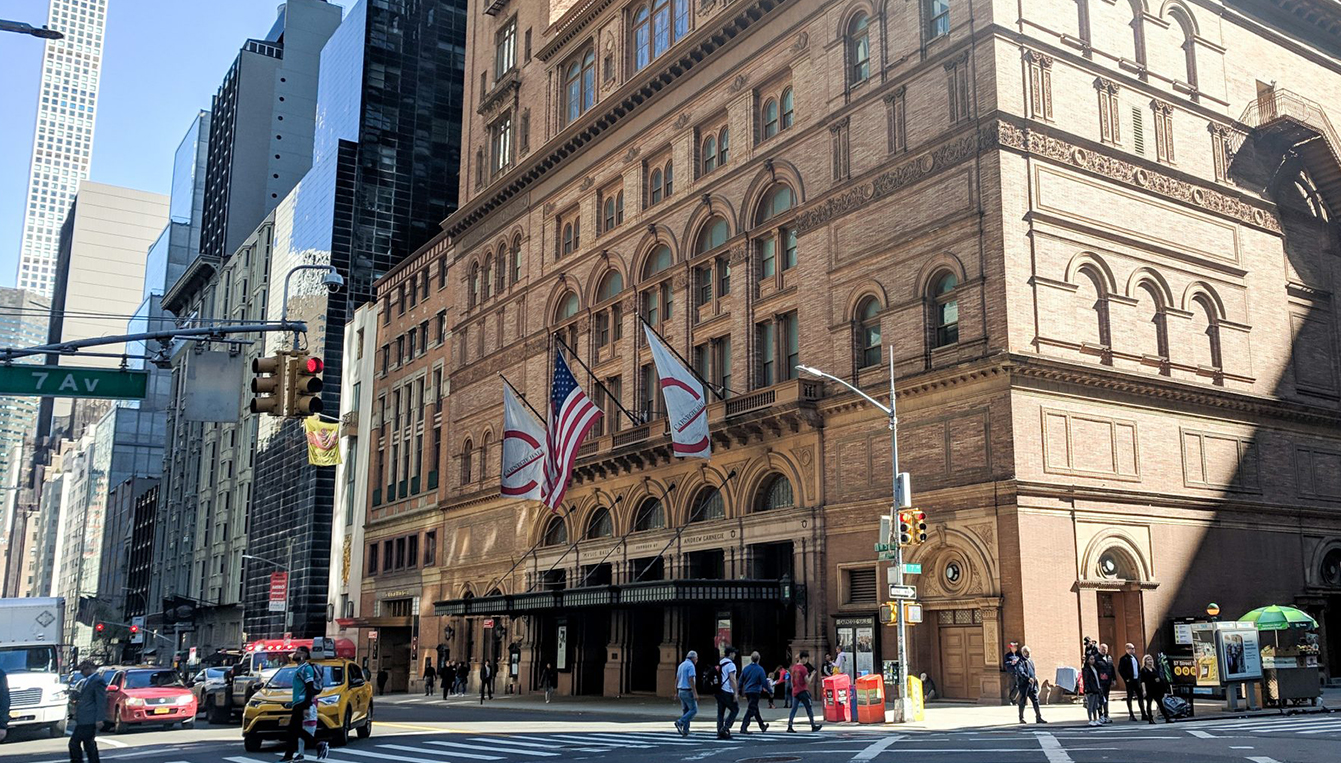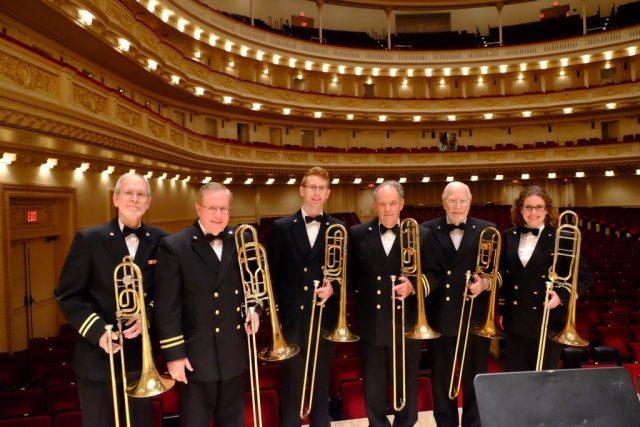Colin Worrich
Senior Consultant

Something that’s uniquely remarkable about Acentech is that so many of our employees are involved with performing, writing, and recording music. One of my “side gigs” is playing trombone with the Allentown Band, America’s oldest civilian concert band. Ordinarily, this means I get to perform classic band pieces, Sousa marches, and Broadway favorites at small concert venues, churches, and community parks throughout eastern Pennsylvania. This past April, however, it meant I got to take part in the band’s performance at Carnegie Hall, as the closing ‘showcase’ concert for the World Projects 2019 New York International Music Festival.
The big day began with a caravan of buses making the two-hour trek from Allentown to New York City, transporting band members, family, fans, local journalists, and – of course – instruments! (This particular performance included a harp, which doesn’t exactly meet carry-on size requirements.) Upon arrival, we left the buses and tag-alongs at the backstage door, then navigated our way down winding corridors to a dressing room adorned with photos of Carnegie Hall performers past – the likes of Yo-Yo Ma, Renée Fleming, and Elton John. Before long, we were called for our soundcheck, and that meant time to step on stage.

I don’t think I’ve ever felt as exposed musically as I did during the proceeding 30-minute rehearsal. Carnegie Hall is certainly the largest indoor venue I’ve ever played in, but more striking to me than the cavernous size was the clarity with which I could hear everything coming out of my trombone. A fellow band member remarked to me, “if I can hear my own mistakes this well, imagine how bad they must sound to the audience.” I suspect this feeling of aural vulnerability came from 3 main acoustical factors:
Besides a nice family dinner, the rest of the day amounted to nothing more than waiting around, with the rush of rehearsal fading fast. I didn’t begin to snap out of my daze of boredom until several hours later when we finally began lining up in the wings. Fortunately, walking out on stage and taking my seat in front of an eager audience provided just the jolt I needed – by the time the band had finished tuning, I was locked in and ready to go.
The concert was a total blast, not least because of the acoustics. If I could sum up the onstage feeling with one analogy, it would be this: playing at Carnegie Hall was like speaking into an intercom. While the sound you were making may have seemed immediate and intimate, you couldn’t shake the feeling that it was out there booming somewhere else in the building. Do professional performers feel like this on every big-time stage they play or is Carnegie Hall unique? Hopefully, I’ll have more opportunities to find out.